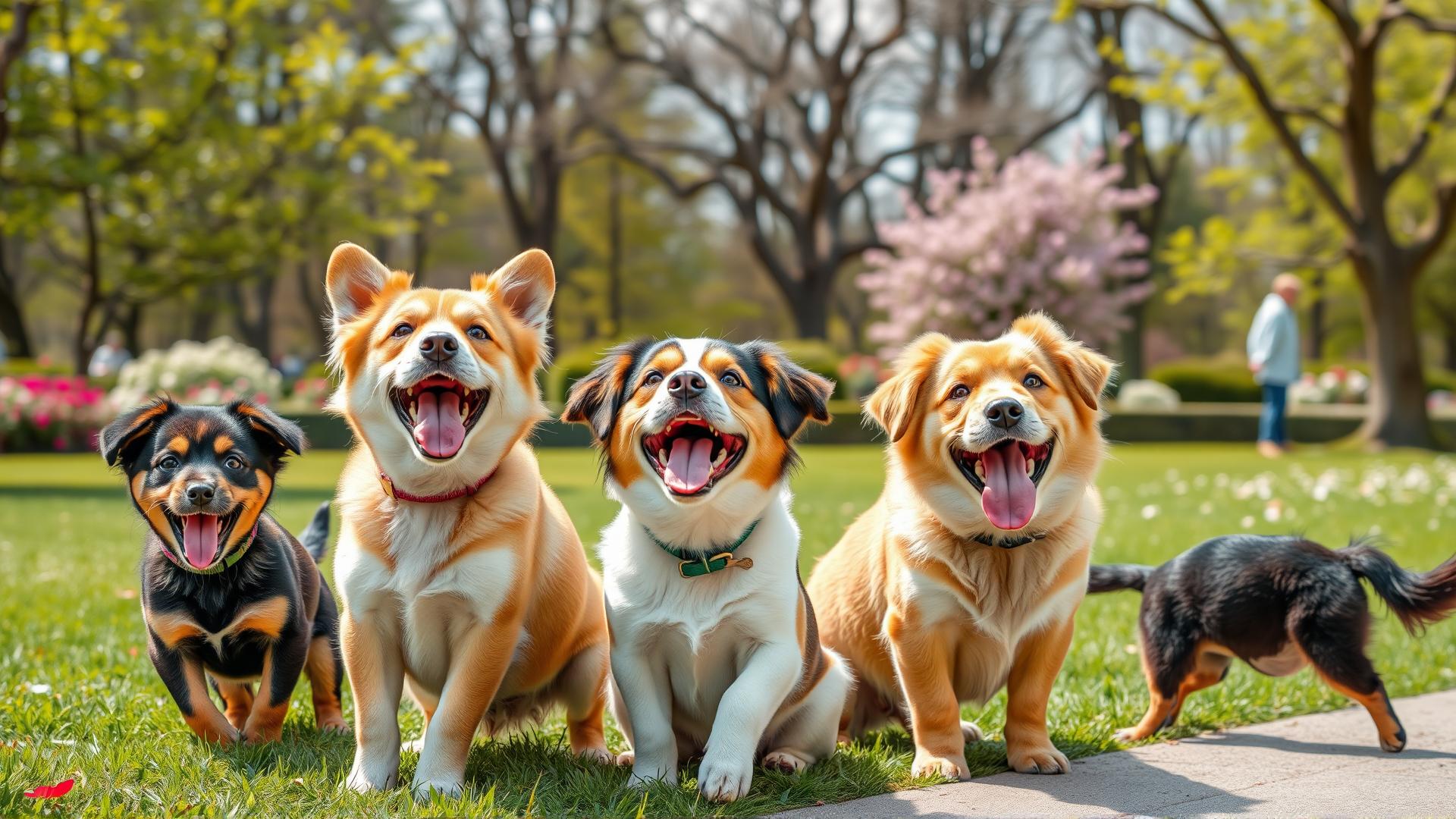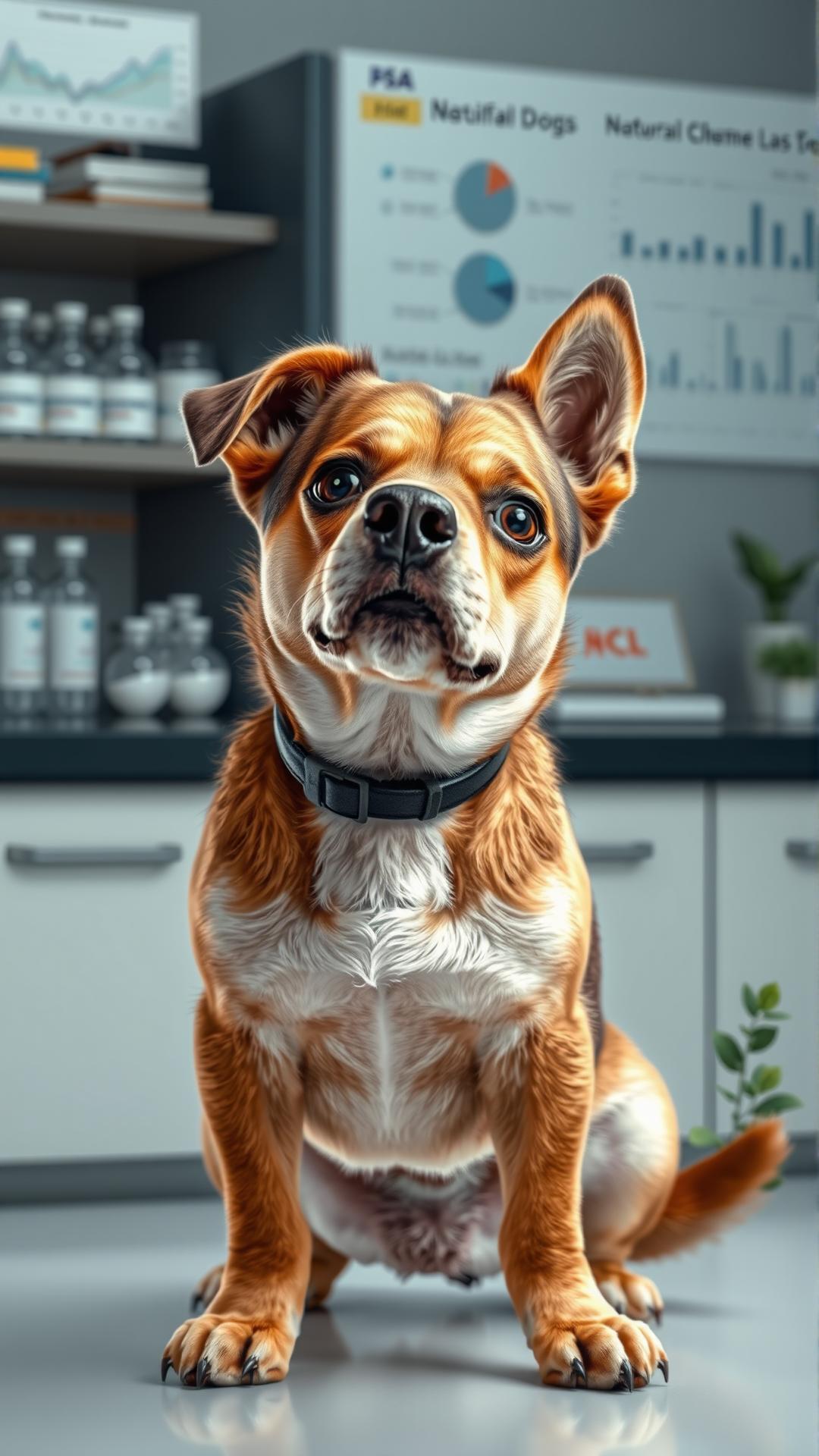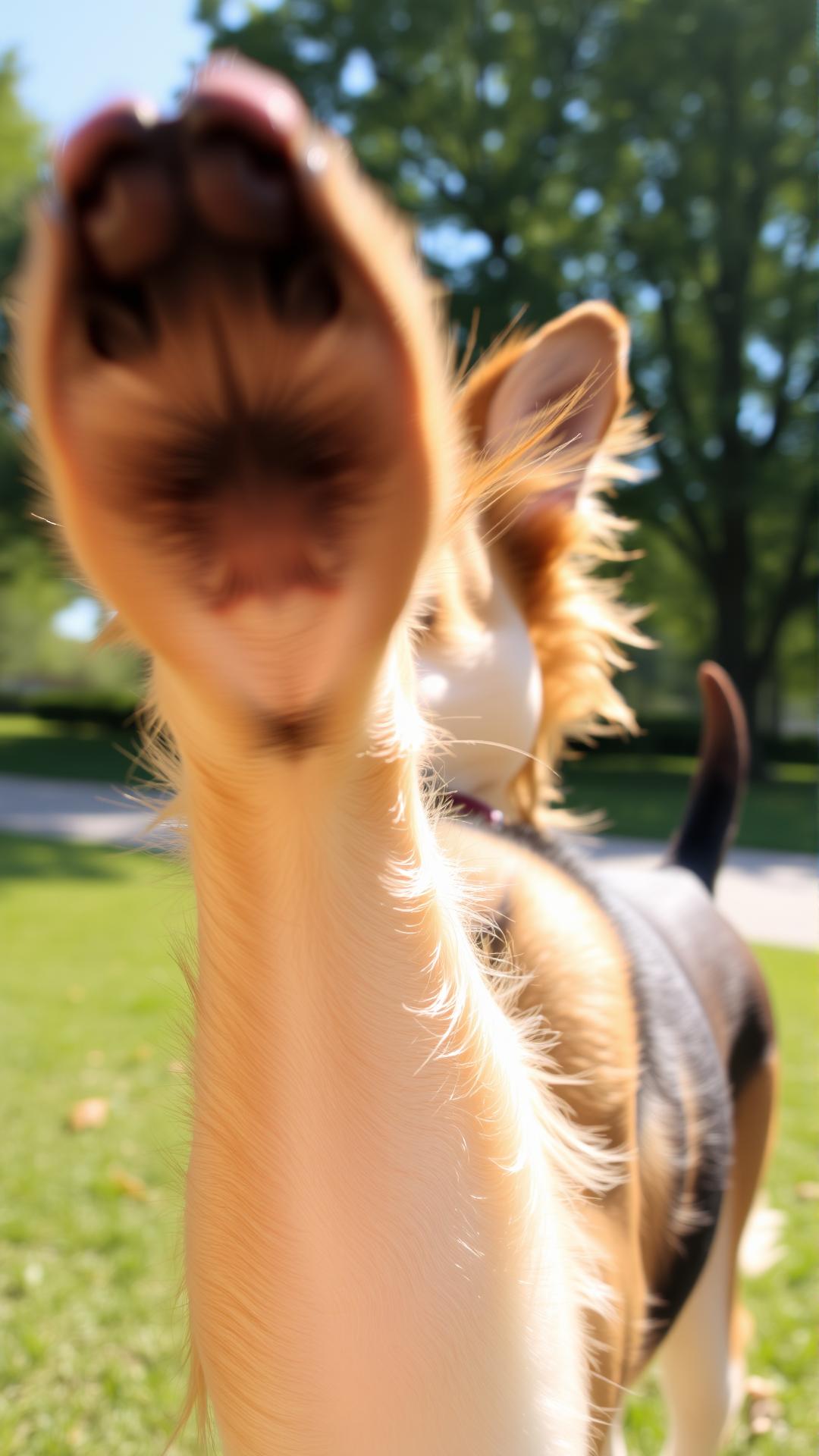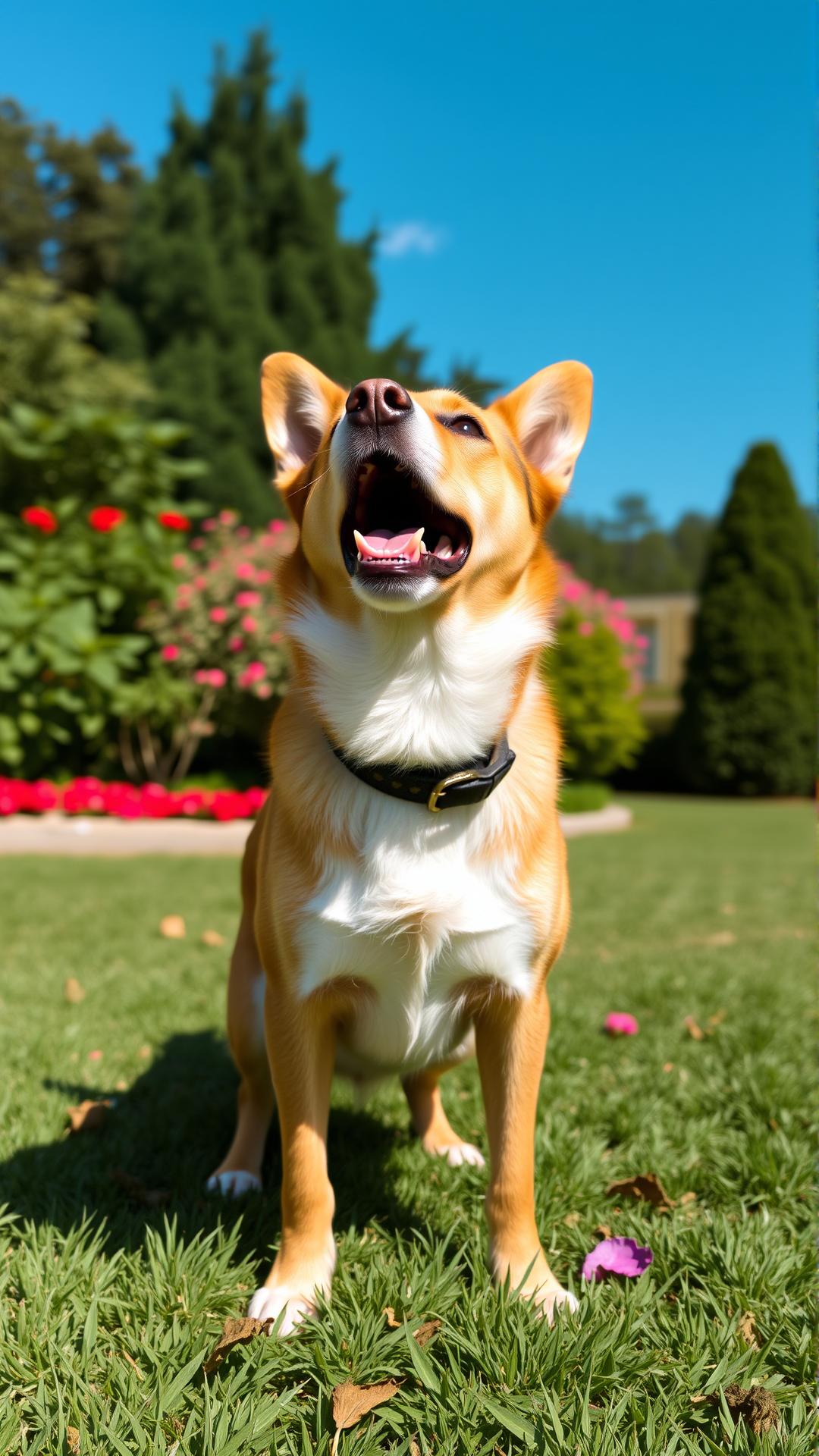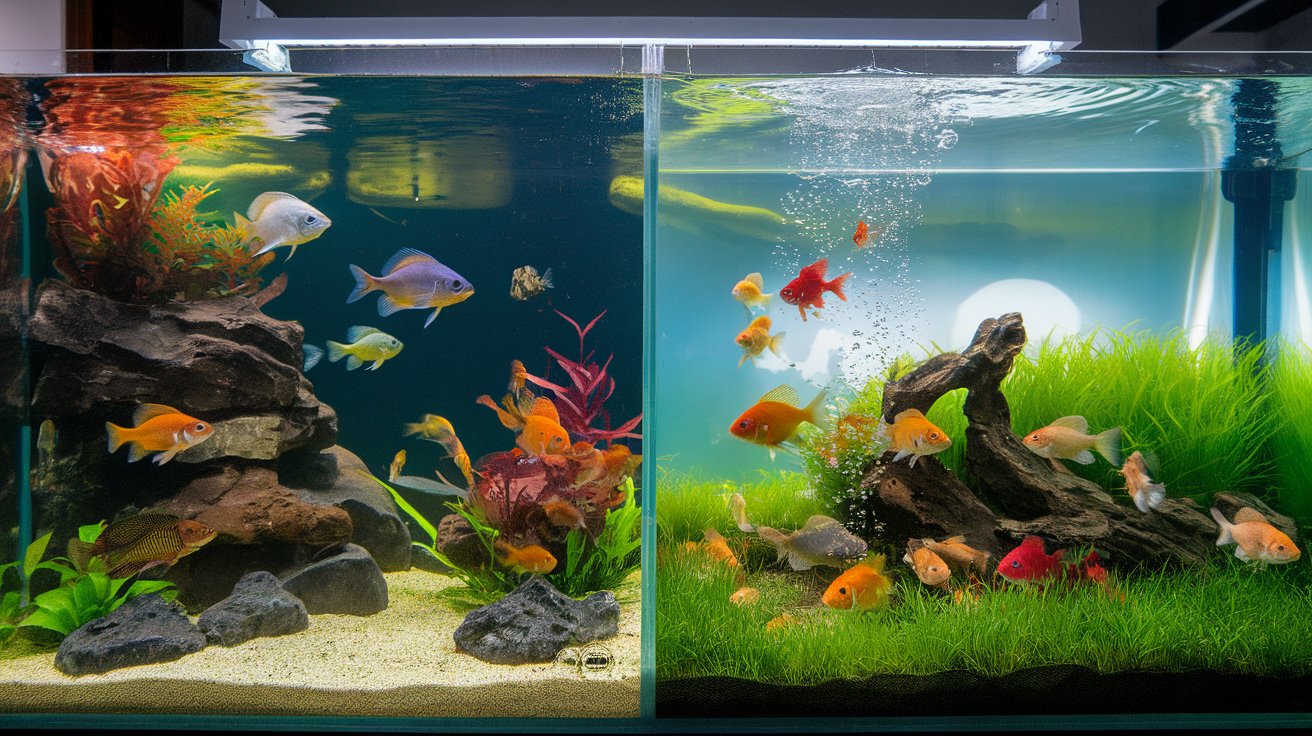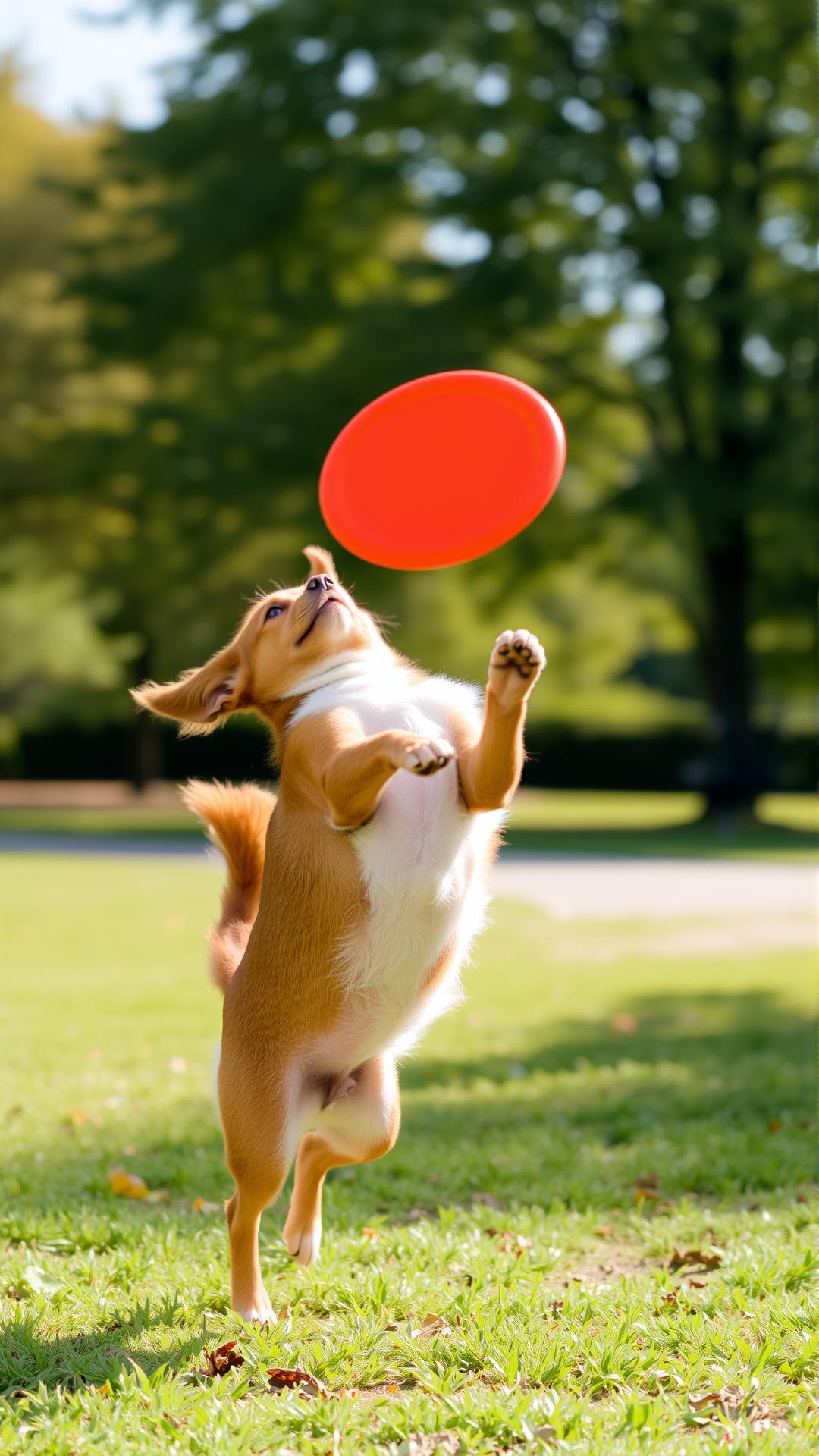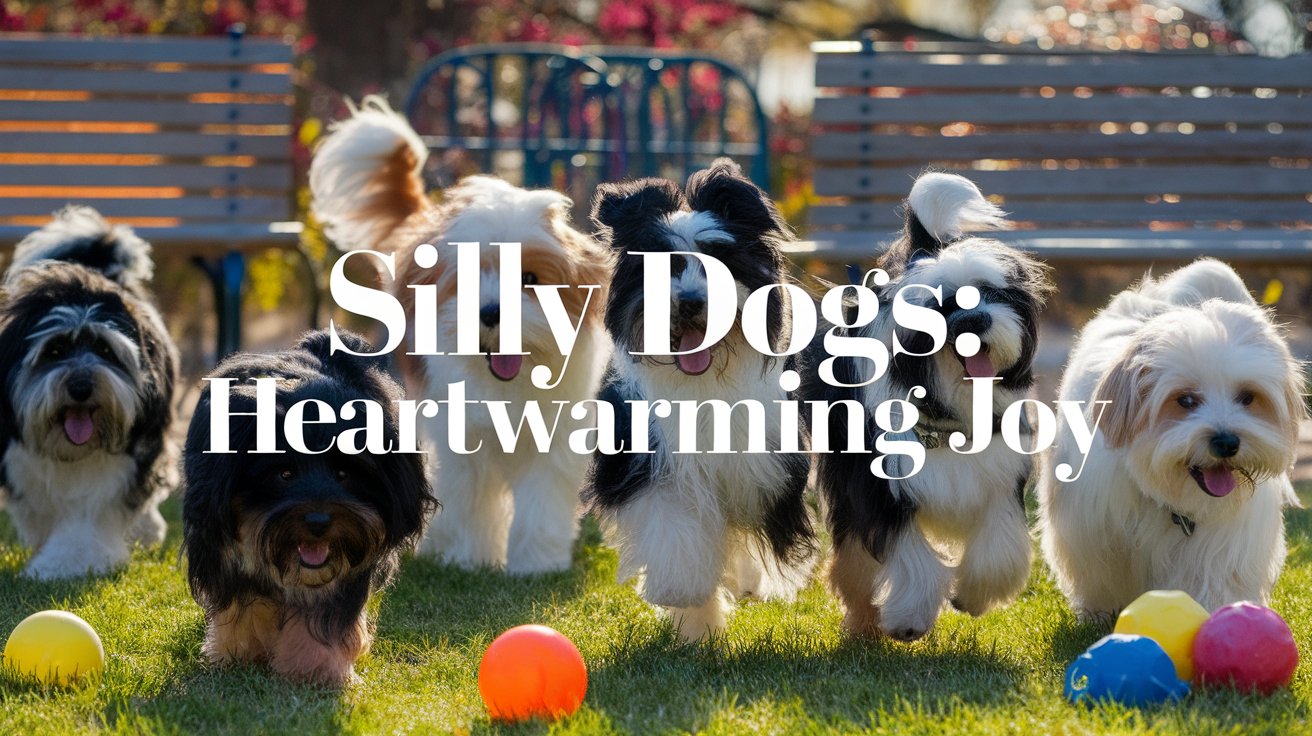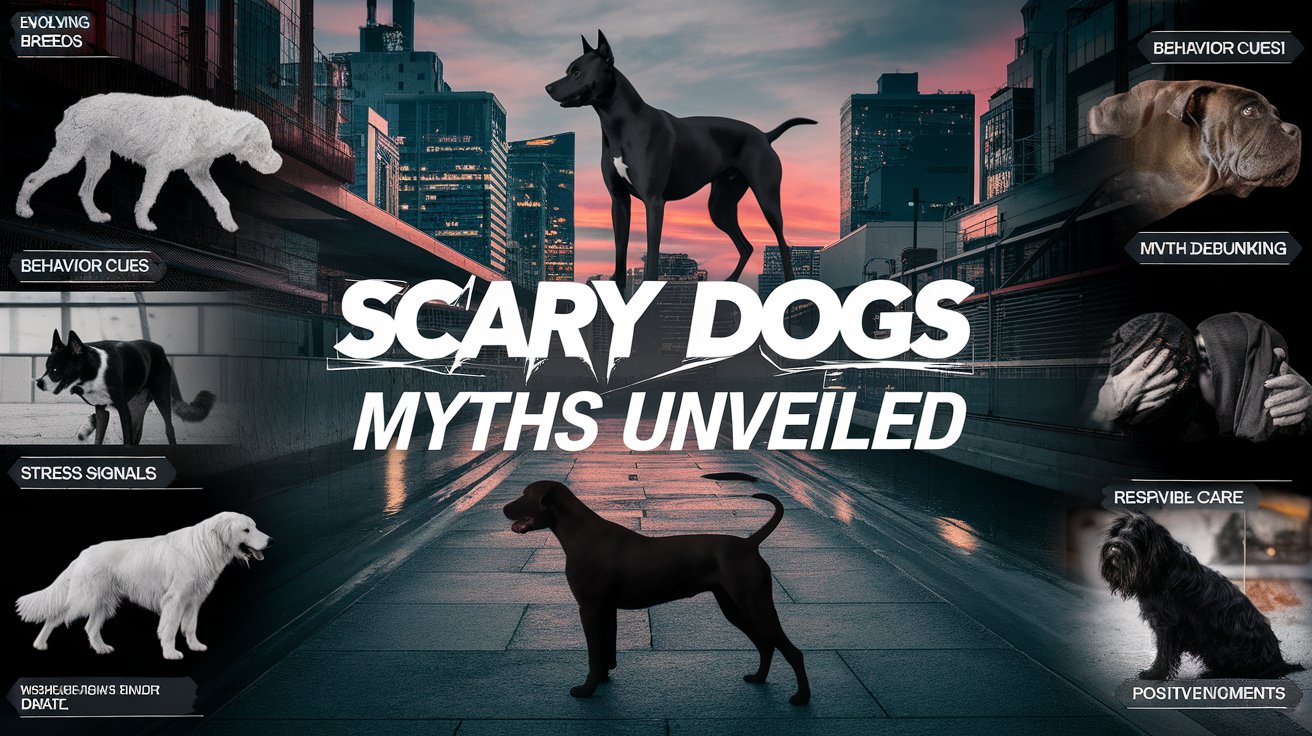Introduction
Dogs have an inherent ability to express joy that captivates the hearts of their owners and onlookers alike. From the playful antics of a golden retriever puppy to the silly behavior of dachshund puppies, these pretty dogs illustrate an emotional language that transcends species. Their exuberant greetings, tail wags, and playful barks are more than just actions; they are a reflection of their inner happiness. Each breed, whether it’s a doberman pinscher or an italian greyhound, has its unique traits that contribute to their distinct expressions of joy.
As we explore deeper into the world of dogs, we will explore how different breeds showcase their happiness through various behaviors. We will also uncover the science behind these joyful expressions and why they are vital for a dog’s well-being. By understanding how our furry companions communicate their joy, we can enhance our relationships with them and ensure they lead fulfilling lives. Join us as we embark on this heartwarming journey through the vibrant world of pretty dogs and their unique ways of expressing joy.
The Science of Happiness in Dogs Exploring Factors that Contribute to Joy
The Psychological and Physiological Roots of Canine Happiness
The happiness observed in dogs, such as golden retrievers and Italian greyhounds, is more than just whimsically cute behavior; it is deeply rooted in their psychology and physiology. Dogs are social animals, and their emotional welfare is significantly influenced by their interactions with humans and other animals. The levels of oxytocin, often referred to as the “love hormone,” play a vital role in creating strong bonds. This neuropeptide spikes during affectionate interactions and fosters joy in both humans and their canine companions.
A dog’s happiness is also linked to its physical health. Regular exercise is crucial for a dog’s well-being, with breeds like the energetic golden retriever requiring substantial physical activity to maintain not just their physical health, but also their mental well-being. When they engage in play, whether chasing a frisbee or running alongside their owners, their bodies release endorphins, leading to feelings of euphoria and satisfaction.
Different breeds exhibit unique behaviors that signify happiness. For instance, the playful antics of a dachshund puppy might include rapid spins, while a more reserved Doberman pinscher may express joy through gentle nudges and tail wafts. These behaviors can be as distinct as the physical characteristics that define each breed.
The environment also greatly influences canine happiness. A stimulating setting filled with toys, social interactions, and outdoor exploration can enhance a dog’s mood. Conversely, a stressful environment can lead to anxiety and, ultimately, unhappiness. Training techniques that promote positive reinforcement contribute to a feeling of accomplishment in dogs, further elevating their joy.
Playfulness and silly antics exhibited by various breeds not only provide visual entertainment for us but also serve as critical expressions of their happiness. Funny animal photos that circulate online often showcase this exuberance, reminding us of the joy our dogs can bring into our lives.
Understanding the psychological and physiological factors that contribute to happiness in dogs enhances our ability to care for them. Being attuned to their specific needs based on their unique breed characteristics ensures that we promote both their emotional and physical well-being and nurture the joyous expressions that make dog companionship so rewarding.
Tail Wagging A Universal Sign of Joy
The Language of Tails
For many dog lovers, tail wagging is a familiar and heartwarming sight. This simple yet expressive act serves as a universal language of joy among our canine companions. The act of a dog wagging its tail can convey a range of emotions, from excitement to contentment, and everything in between. When a dog expresses happiness through tail wagging, it not only signifies emotional well-being, but it also fosters a bond between the dog and its human. Tail wagging, however, is not a one-size-fits-all behavior and can differ remarkably among various breeds.
Take the golden retriever, for instance. This breed is known for its exuberant personality and friendliness. When a golden retriever is happy, its tail wags vigorously, often creating a delightful blur of movement. The tail typically arches high and moves in a wide arc, showcasing pure unabashed joy. In contrast, smaller breeds like the dachshund may exhibit a different style of tail wagging. Their tails often wag in quick, short bursts, conveying excitement and enthusiasm, albeit in a more compact form. Understanding these subtle differences can enhance the pet-owner relationship, allowing humans to recognize when their dogs are feeling particularly joyful.
Senior Dogs and Tail Communication
Senior dogs might not wag their tails as robustly as younger counterparts due to stiffness or health issues. However, even a gentle wag can signify happiness and satisfaction in more mature dogs, reminding us that joy can emerge in various forms. Meanwhile, breeds like the Italian greyhound showcase elegance even in simplicity, with their long, slender tails exhibiting subtle, graceful movements that signal delight without overwhelming exuberance.
Tail wagging serves as a critical tool in a dog’s emotional toolkit. Recognizing the nuances in tail wagging among different breeds can lead to a deeper understanding of what our pets are trying to communicate. Whether it’s the energetic thrums of a golden retriever puppy or the delicate flicks of an Italian greyhound, each wag tells a unique story of joy and connection between dogs and humans—one wag at a time.
Vocal Expressions Barking with Happiness
The Sounds of Joy in Dogs
Dogs possess a remarkable ability to convey their emotions through vocalizations, and nothing showcases their exuberance quite like a joyful bark. From the enthusiastic yips of a golden retriever puppy to the smooth, melodic sounds of an Italian greyhound, each breed has its own unique vocal signature that reflects their happiness. When a dog is excited, their barking is often higher in pitch and more rhythmical, indicating a strong emotional response. This vocal expression serves multiple purposes, from exciting greetings to playful banter.
A dog’s bark can vary significantly, presenting a spectrum of sounds that communicate different emotions and states. For example, a playful doberman pinscher may engage in a series of quick, sharp barks during playtime. These sounds often evoke a sense of invitation, urging playmates—both canine and human—to join in the fun. Conversely, a more relaxed bark, combined with a wagging tail and focused demeanor, can signal contentment and joy as when a dachshund puppy settles into a cozy spot after a day of adventure.
The Language of Barking and Beyond
While barking is a primary means of vocal communication for dogs, they also utilize a variety of other sounds to express their happiness. Whining, for example, can sometimes be a dog’s way of eagerly asking for attention or signaling their desire to play. This sound, although often softer and more plaintive than barking, is rooted in the same joyful impulse. Dogs frequently accompany these vocalizations with physical gestures, such as wagging their tails, prancing around, or even hopping in place, amplifying their delight.
The interplay between barking and body language creates a robust means of emotional expression. Owners and caregivers can typically decode these vocalizations by observing their pet’s behavior. A dog’s vocal response during playtime often reflects their excitement, reinforcing the bond between them and their human companions. The laughter that results from a dog’s antics, often captured in funny animal photos shared online, is testament to the joy our canine friends bring into our lives through their vocal exuberance. Every bark, yip, or whine is a reminder of the unique ways dogs connect with us, amplifying their happiness in unmistakable ways.
Playtime The Heart of a Dogs Joy
The Importance of Interaction
Every dog owner recognizes the sparkle in their dog’s eyes during playtime. This cherished activity is not just a pastime; it is a vital cornerstone of a dog’s happiness. Dogs, whether they are golden retriever puppies or elegant Italian greyhounds, thrive on interaction, and the joy they experience during play is palpable. Through games, they engage their minds and bodies, forging stronger bonds with their human companions while simultaneously expressing their innate happiness.
For many dogs, playtime embodies the essence of joy. Activities like fetching a ball, tugging on a rope, or engaging in a friendly chase allow them to channel their energy positively. Play strengthens social skills, boosts moods, and fosters a sense of security. This interaction is essential for their emotional development and overall well-being. A playful doberman pinscher bounding across a field or a dachshund puppy investigating a new toy exemplifies how intrinsic play is to the joyful expressions of our furry friends.
Unique Expressions of Joy During Play
Dogs convey their enthusiasm in distinctive ways during playtime. The exuberance of a golden retriever puppy, with its flopping ears and wagging tail, is a sight to behold. Their joyful barks and playful leaps transcend mere excitement; they reflect a deep sense of contentment. Each bounding movement, each tail wag, is an enthusiastic declaration of their happiness. On the other hand, a more reserved breed like the Italian greyhound may express its joy through quick bursts of speed and playful pounces, showcasing its agility and delight.
Engaging in play with your dog is also beneficial for human-animal relationships. These moments create shared experiences that foster emotional connections. Dogs are highly attuned to their owners’ emotions, and when humans express joy and laughter during play, dogs respond in kind. This mutual happiness solidifies trust and affection between partners. A simple game of fetch can be a heartfelt dialogue, conveying love and joy on both sides.
Playtime is not merely an opportunity for exercise; it is a celebration of life for dogs. The joy they exhibit while playing is expressed through their physical movements, vocalizations, and affectionate nuances. As guardians of these pretty dogs, it is essential to understand and cherish these moments, as they play a fundamental role in our canine companions’ happiness.
Cuddles and Affection Canines Love Touch
The Language of Touch
The bond between humans and their furry companions is often expressed through physical affection, making touch a vital component of a dog’s happiness. This connection is evident in various breeds, from the exuberantly affectionate golden retriever to the elegantly playful Italian greyhound. Dogs are not just animals; they are emotional beings who thrive on tactile experiences, reinforcing their joy through cuddles and gentle caresses.
When a dog nudges its owner with its nose or leans against a leg, it is not merely seeking comfort but expressing a profound sense of trust and contentment. Dogs communicate their happiness through these physical interactions, and many breeds, including doberman pinschers and dachshund puppies, exhibit unique preferences for touch. While some may revel in being wrapped in a loving embrace, others might prefer a gentle scratch behind the ears or a soft stroke along their back.
The Science Behind Affection
Research indicates that physical touch in dogs can trigger the release of oxytocin, the “love hormone,” which plays a significant role in bonding and emotional wellbeing. This physiological response is similar to that observed in humans, creating a mutually beneficial cycle of love and happiness. The tactile nature of interaction can significantly reduce stress and anxiety in dogs, enhancing their overall mood and creating an environment where joy flourishes.
A dog that receives regular affection can develop a more stable temperament and exhibit playful behaviors, showcasing their delight not just in their own lives but in the shared experiences with their humans. This is particularly evident when observing the silly antics of breeds like the Italian greyhound or the playful expressions of golden retriever puppies, where the enjoyment of touch enriches their interactions.
It’s also essential to recognize that the nuances of touch can vary across breeds. Some may prefer a gentle pat or a soft belly rub, while others might thrive on a more vigorous playtime hug. Understanding these preferences allows for a deeper connection, making every cuddle a celebration of mutual joy.
As we continue to explore the delightful expressions of happiness in our canine companions, it becomes increasingly evident that touch is not just a form of communication; it is a fundamental aspect of a dog’s emotional landscape, helping to define their unique ways of expressing joy.
Beauty in Silly Antics Capture the delightful and often funny behaviors of different breeds that express joy
When it comes to expressing happiness, dogs have an array of delightful antics that not only amuse their owners but also showcase their unique personalities. From the exuberant golden retriever puppy leaping with boundless energy to the elegant Italian greyhound displaying her quirky grace, every breed has its own special way of manifesting joy.
Golden retriever puppies, known for their playful charm, often embody the essence of sheer joy. Watching them gallop around with ears flopping and tails wagging creates an atmosphere of pure delight. They may roll around in the grass, chase after their own tails, or engage in a comical game of tug-of-war with a not-so-resilient toy. Their goofy antics serve as reminders that happiness can be found in the simplest of actions.
On the other end of the spectrum, the doberman pinscher exhibits a different brand of joy, one that combines enthusiasm with an air of dignity. These intelligent and alert dogs may express their happiness through a series of playful barks and sudden bursts of energy that leave onlookers in stitches. An unexpected dash around the yard might be accompanied by exaggerated, almost theatrical leaps, adding a charming layer to their already striking presence.
Dachshund puppies, with their short legs and long bodies, take silliness to another level. Their attempts to dash after a ball often result in a comical shuffle that has everyone laughing. They may also flaunt their joy by burrowing into blankets or exploring the world at their own playful pace. Each move is a tender expression of happiness packaged in a small, adorable form.
Then there’s the Italian greyhound, a breed known for its delicate beauty and charming quirks. Their playful antics often include dramatic leaps and twirls, showcasing an elegant yet whimsical approach to happiness. When overcoming their initial shyness, these graceful dogs enact moments of joy that leave a lasting impression. They may find joy in a playful chase around the room or a gentle dance with their humans, proving that beauty lies in their unique forms of expression.
In observing the silly behaviors of these dogs, one realizes how vital laughter is in the human-canine bond. Their joyful expressions remind us of the unfiltered happiness they bring into our lives, forging connections that transcend words and gestures. In each silly antic, from the bouncy golden retriever to the charming dachshund, there lies a heartwarming reminder of the light they bring into our lives.
Joy in Everyday Moments The Heartfelt Expressions of Happiness in Pretty Dogs
Simple Joys and Everyday Actions
Pretty dogs, with their varied breed characteristics, showcase joy in remarkable and lovable ways. Whether a golden retriever puppy romps in the garden or an Italian greyhound chases after a butterfly, these furry companions express their happiness through simple yet profound actions. Observing a dog can be like witnessing a vivid painting come alive, where each small movement tells a story of sheer contentment.
The wagging tail is perhaps the most iconic symbol of a dog’s joy. It serves as an instant visual cue, reflecting their emotional state. A swift, full-bodied wag indicates pure excitement, commonly seen when a beloved human arrives home. In contrast, more permissive wags, often lateral and slower, denote a gentle happiness during calm moments, such as cuddling on the couch. These small yet significant gestures forge a deep connection between humans and their pets, as we often respond with warmth and affection in return.
The way a dog approaches play highlights its joyful demeanor. Take the playful behavior of doberman pinschers, whose keen intelligence is matched by an exuberant spirit. Their bouncing, playful antics evoke laughter and joy in their human companions, creating a delightful atmosphere infused with shared happiness. Even quiet breeds, like Dachshund puppies, radiate joy through their curiosity, exploring each nook and cranny with excitement and delight, tackling everyday objects like they are extraordinary treasures.
Another subtle expression of joy is the way a dog engages in a familiar routine. Dogs thrive on predictability, and their joyous anticipation of activities such as walks, mealtime, or playtime is evident. The excited pacing, joyful barks, or even happy little hops while waiting by the door reveal their enthusiasm for these simple yet cherished moments. Each of these actions encapsulates the notion that happiness often lies in life’s small rituals.
Pretty dogs exhibit joy through their interactions with nature. Whether a golden retriever splashes through a pile of autumn leaves or an Italian greyhound races through an open field, their joy becomes infectious to those who witness it. In these moments, their exuberance serves as a reminder that happiness can be found in the simplest of actions, urging us to appreciate life through their eyes.
Creating a Happy Environment for Dogs Tips for Enhancing Joy
Building a Joyful Space for Your Dog
Creating an environment where dogs can thrive and express their unique joy involves more than just providing food and shelter. It requires a thoughtful approach to their physical and emotional needs. A happy dog is a well-adjusted dog, and there are several ways to cultivate a space that enhances their happiness.
First and foremost, consider the layout of your living space. Ensure there are safe areas where your dog can play and explore. A designated play zone filled with toys, where golden retriever puppies can frolic and engage in fun activities, is essential. Incorporating a mix of stimulating toys, such as puzzle feeders or squeaky toys, encourages playful behavior and combats boredom. Dogs, from doberman pinschers to dachshund puppies, thrive on engagement, and providing a variety of toys can keep their spirits high.
Comfort is also vital. A cozy bed in a quiet space allows for relaxation and a sense of security. By providing a safe haven for your dog, you help reduce stress and anxiety, which can translate into a happier demeanor. It’s also beneficial to give them access to different textures and surfaces where they can lounge, such as soft rugs or warm blankets.
Consider the sensory aspects of your environment. Dogs experience the world largely through their sense of smell. Aromatic plants like lavender or chamomile can create a calming atmosphere. As you enhance your space, remember to include natural light and fresh air. Regular outdoor time is crucial for dogs; it allows them to indulge in their natural instincts, such as exploring and socializing.
Establishing Routine and Social Connections
Another vital aspect of a happy environment is routine. Dogs find comfort in predictability, so establishing a consistent schedule for feeding, walks, and playtime can significantly contribute to their well-being. Routine also encourages bonding moments, like engaging in training sessions or simply enjoying a walk together.
Social interactions are fundamental to a dog’s happiness. Arrange playdates with other dogs, whether they are energetic golden retrievers or the agile italian greyhound. Socialization helps them learn essential social cues and enhances their sense of belonging. This not only encourages happiness but also fosters positive behaviors.
Creating a dog-friendly environment that nurtures joy is about blending comfort, engagement, and socialization. By paying attention to their needs and providing a loving space, each dog can express their unique happiness, bringing joy not only to themselves but to their families as well.
Conclusions
The joyful expressions of pretty dogs provide us with valuable insights into their emotional states and overall well-being. The way they convey happiness through wagging tails, playful antics, and affectionate behaviors offers a window into their hearts. By appreciating the uniqueness of each breed, from the exuberant golden retriever puppies to the charming silly animals like dachshunds, we can foster stronger bonds with our canine companions. Understanding these joyful expressions enriches our interactions and enhances our ability to respond effectively to their needs.
Recognizing and nurturing the joy in our dogs not only enhances their quality of life but also deepens the connection we share with them. As we continue to explore the intricate relationship between humans and their furry friends, let us celebrate the beautiful ways in which these pretty dogs express their joy, reminding us to find happiness in the simple moments of life.

